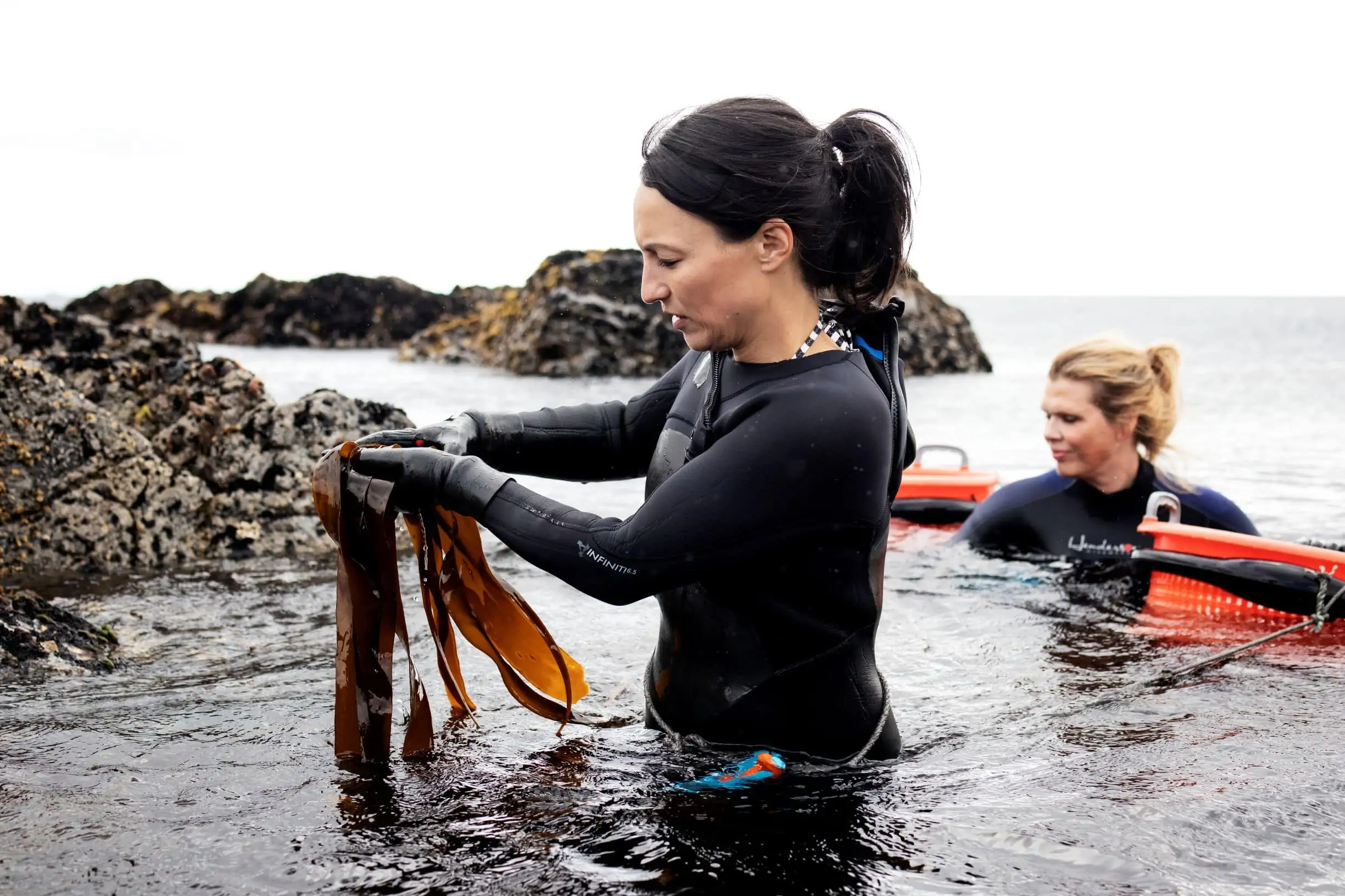What are the Iodine benefits of eating Seaweed?




Seaweed has a higher concentration of nutrients, vitamins and minerals than any other plant on earth – rightly earning its recognition as a superfood. From brain-enhancing omega-3s to gut-healthy probiotics, eating seaweed can benefit many areas of your health. However, one of the biggest health benefits of eating seaweed is due to a natural mineral called iodine.
Why is it important?
Iodine is an essential micronutrient that the body needs to function. It improves your metabolism, helps to regulate your hormone levels, supports brain function and helps your cells function properly.
Your body can’t produce iodine, so it’s important to get enough from your diet!
Is iodine deficiency common?
Around one quarter of the world’s population do not get enough iodine. European countries like Norway and Germany do not get enough. (2)
Iodine deficiency is the biggest cause of brain damage worldwide (4) and can cause hypothyroidism, in which the thyroid gland doesn’t produce enough hormones and can lead to tiredness, weight gain and depression.
Some people are at particularly high risk of iodine deficiency. These include women of childbearing age, pregnant women, lactating women and children. Vegetarians, vegans, or people allergic to fish, seafood and dairy products, are also at risk, as these are common sources of the nutrient.
The FHI (Norwegian Institute of Public Health) currently recommends (1) that especially pregnant women and children should increase their iodine intake.
What is being done?
As the amount of fish and dairy products being eaten is decreasing (5), public health bodies have been adding iodine to salt to try and compensate for the lower levels of natural intake. This isn’t the perfect solution, as eating too much salt leads to a whole host of health issues, such as raised blood pressure, heart disease and stomach cancer.
In Norway, the average man eats 10g of salt a day, which is a lot more than the recommended amount of 6g.(6)




Source : Lofoten seaweed Company data and FHI
Could you have too much iodine?
Like with everything, too much can be harmful. But what is too much? For adults, the recommended daily intake is 150 micrograms. **
We created our products as a simple way for you to get all the health benefits of eating seaweed, whilst minimising the risks. A sprinkle of our Simply Seaweed in your morning smoothie, for example, or seasoning your roasted vegetables with our Arctic Seaweed Salt, is a great way to get your daily dose of iodine. All our products are clearly labelled with contents and recommended serving size.
Some types of seaweed have particularly high levels of iodine, which is why we don’t use Oar Weed (Laminaria digitata) or Sugar Kelp (Saccharina latissima) in our products.
Below is a table of our products and daily recommended intake
| Lofoten Seaweed product | Teaspoon(5.0mL)/day/adult and >10yo child (150µg/d) | Teaspoon(5.0mL)/day/pregnant women and lactating women (WHO) (250µg/d) |
| Arctic Seaweed Salt | 1/4 | 1/3 |
| Lofoten Umami | 1/3 | 1/2 |
| Simply seaweed | 1/5 | 1/4 |
| Truffle Seaweed Salt | 1/3 | 1/2 |
Source: Lofoten Seaweed Company data
Weed that’s good for you
By Tamara Singer and Maxime Chamblet
- Norwegian Institute of Public Health (FHI) – Risiko for jodmangel i Norge – Identifisering av et akutt behov for tiltak. June 2016, avalaible on : https://tinyurl.com/ydgl2e2p
- Iodine Global Institute map, visited : 22/04/2020, available on : https://www.ign.org/
- Hetzel B.S. – Iodine deficiency disorders (IDD) and their eradication. Lancet 1983; 2: 1126-1129
- The Lancet (12 July 2008). “Iodine deficiency—way to go yet”. The Lancet. 372 (9633): 88. doi:10.1016/S0140-6736(08)61009-0. PMID 18620930. S2CID 5416860
- World Health Organization – Iodine deficiency disorders, visited 09/06/2020, available on : https://www.who.int/nutrition/topics/idd/en/
- Satatics Norway – 06376: Quantity consumption of food and beverages per person per year, by commodity group (COICOP), contents and interval (year). Latest update : 13/02/2008, visited : 22/04/2020, available on : https://www.ssb.no/en/statbank/table/06376/
- Norwegian Institute of Public Health – Salt intake (indicator 8). Published : 07/09/2018, latest update : 06/01/2020, available on : https://www.fhi.no/en/op/Indicators-for-NCD/diet/saltinntak-indikator-8/
- ANSES – Ciqual Table : Iodine. Visited : 17/08/2020, available on : https://ciqual.anses.fr/#
- Tai Sheng Yeh, Nu Hui Hung, Tzu Chun Lin (2014) – Analysis of iodine content in seaweed by GC-ECD and estimation of iodine intake, Journal of Food and Drug Analysis, Volume 22, Issue 2, June 2014, Pages 189-196
- Alina Petre – Are Goitrogens in foods Harmful? Published : 15/06/2017, visited : 28/04/2020, available on : https://www.healthline.com/nutrition/goitrogens-in-foods
*Iodine concentration levels in seaweed is dependent on the season it is harvested, the type of species, and the location.
**This varies slightly from country to country.
If you are currently taking iodine pills or have thyroid problems, we don’t recommend you take seaweed without consulting your doctor first.
We don’t recommend you put seaweed in babies’ dishes because their food is pre-supplemented.